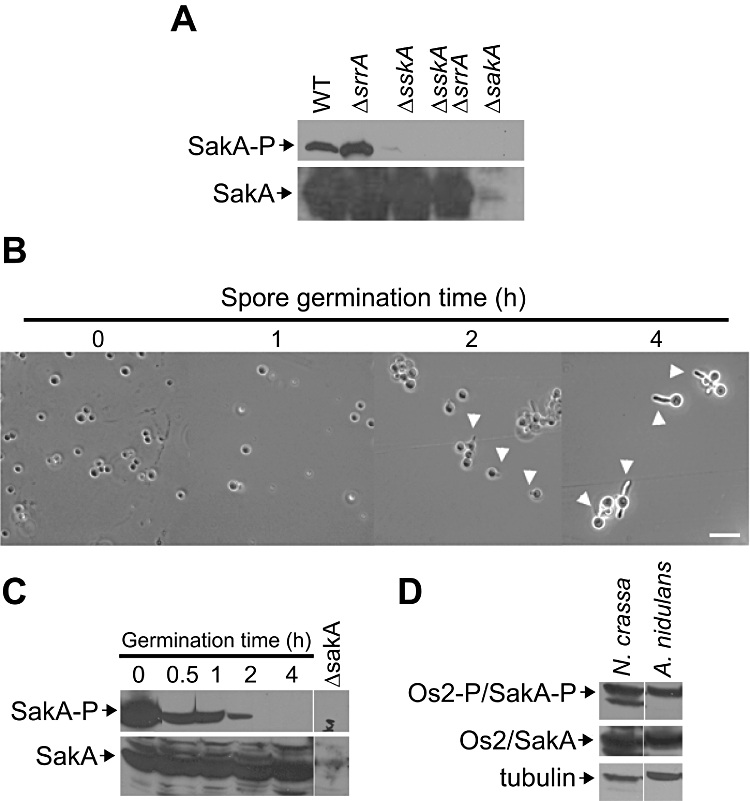Fig. 6.

A. nidulans SakA and N. crassa OS-2 SAPKS are phosphorylated in intact conidia; SakA dephosphorylation occurs during germination.
A. Conidia from strains CLK43 (WT), COSΔsrrA03 (ΔsrrA), COSΔsskA02 (ΔsskA), COSΔsrrA/ΔsskA02 (ΔsrrAΔsskA) and TOL1 (ΔsakA) were collected, immediately frozen with liquid nitrogen and processed for Western blot immunodetection of phosphorylated (SakA-P). ΔsakA strain TOL1 was included as negative control and a total SakA blot is included as protein loading control.
B and C. (B) Conidia from wild-type strain CLK43 were used to inoculate MM and incubated at 37°C for up to 4 h. At indicated time points samples were collected, examined by light microscopy (arrowheads indicate some of the conidial germ tubes) and processed as in (A) for immunoblotting, to detect phosphorylated (SakA-P) and total SakA (C). Bar = 10 µm.
D. Conidia from N. crassa or A. nidulans were processed for immunoblotting as in (A) to detect phosphorylated and non-phosphorylated levels of MAPK OS-2 (N. crassa) or SakA (A. nidulans). An anti-tubulin antibody was used as additional sample loading reference.See Table 2 for full strain genotypes.
